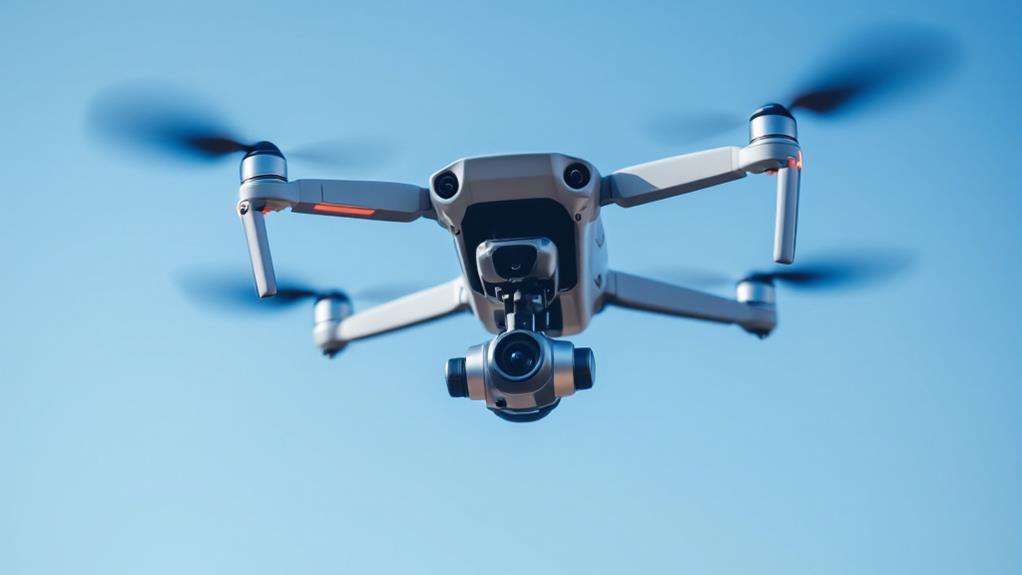What Is a Hummingbird Drone?
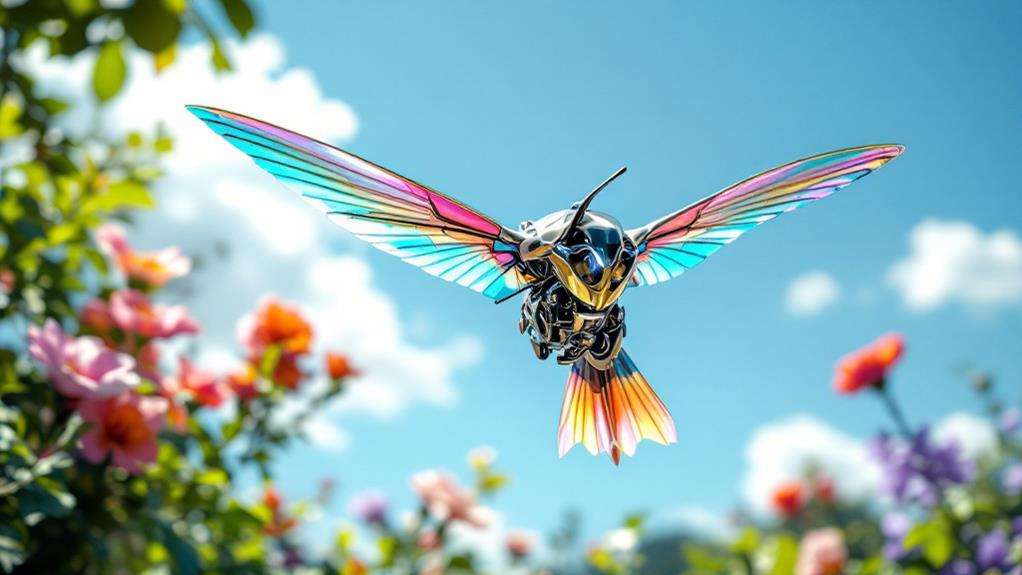
You might find a hummingbird drone fascinating as it's a state-of-the-art unmanned aerial vehicle that mimics the nimble flight of a real hummingbird. With a compact size and lightweight structure, it can perform rapid maneuvers like 180-degree turns and hover with precision. These drones use advanced flight control algorithms and environmental sensing for navigating tight spaces, making them ideal for surveillance, wildlife monitoring, and rescue missions. Silent and agile, they're perfect for covert operations. Despite challenges like limited battery life, they continue to revolutionize UAV technology, and there's more to uncover about their innovative applications and future potential.
Key Takeaways
- A Hummingbird Drone is a compact UAV inspired by the flight mechanics of real hummingbirds for agility and precision.
- It features rapid wing beats and a ball-and-socket shoulder joint allowing multidirectional flight, including hovering and backward movement.
- Equipped with advanced flight control algorithms, it performs rapid maneuvers and adapts to environmental changes using AI technology.
- Applications include wildlife monitoring, disaster evaluation, surveillance, and search-and-rescue operations, benefiting from its silent flight and compact size.
- Challenges include limited battery capacity, integration of advanced sensing technologies, and high development costs.
Overview of Hummingbird Drones
Hummingbird drones, inspired by the nimble aerial prowess of real hummingbirds, showcase remarkable engineering and design. These bio-inspired robotic flyers are crafted to mimic the agility and precision that hummingbirds naturally possess. Their compact size is a testament to their intricate design, with examples like the Purdue Hummingbird boasting a 17 cm wingspan and a weight of just 12 grams. This compactness allows them to maneuver through tight spaces with ease, emulating their avian counterparts. In scientific research, drones revolutionize methodologies in wildlife monitoring and disaster evaluation, offering unique advantages in data collection and analysis. The key to a hummingbird drone's impressive flight lies in its advanced flight control algorithms. These enable the drone to execute rapid maneuvers, such as 180-degree turns, in under ten wingbeats, making them incredibly responsive. What's fascinating is their ability to navigate environments without relying on visual feedback. Instead, these drones use environmental sensing capabilities, adjusting wing loading to detect and avoid obstacles.
Hummingbird drones hold immense potential in various fields. Their silent flight makes them ideal for covert operations, while their agility proves useful in search-and-rescue missions. Additionally, they can contribute to biological studies, observing wildlife without disturbance, truly embodying the spirit of the hummingbird in every mission.
Design and Features
Imagine a drone so compact yet sophisticated that it mirrors the flight of a real hummingbird. The Nano Hummingbird, engineered by AeroVironment, boasts a remarkable wingspan of just 16 cm, weighing a mere 0.019 kg. Its design allows it to perform advanced flight maneuvers, such as hovering, vertical climbing, and multidirectional flight, giving it the agility akin to the natural creature it's inspired by. This drone isn't just about mimicking nature; it's a powerful tool for surveillance and reconnaissance, equipped with a camera to capture crucial information from the skies.
The Nano Hummingbird operates via remote control, making it a versatile choice for various operational scenarios. Its lightweight construction and biomimetic design are pivotal to its success, enabling unique aerial maneuvers like flips in the air. These features make the Nano Hummingbird not only a technological marvel but also a practical solution for modern surveillance needs.
Here's a quick glance at its key features:
| Feature | Specification | Purpose |
|---|---|---|
| Wingspan | 16 cm | Compact design |
| Weight | 0.019 kg | Lightweight construction |
| Flight Capability | Multidirectional | Enhanced agility |
| Application | Surveillance | Reconnaissance operations |
Flight Mechanics
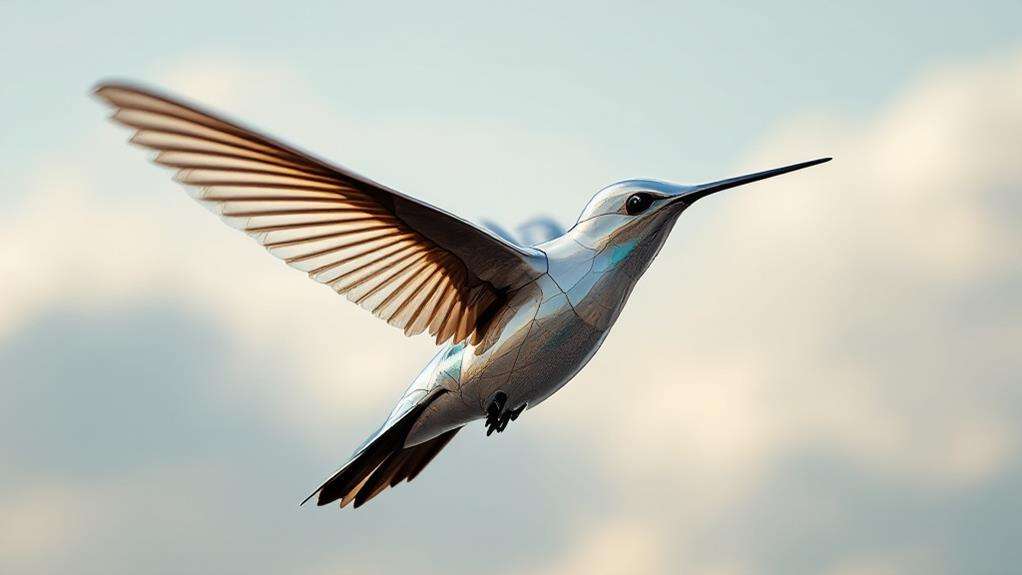
With its compact design and sophisticated features, the Nano Hummingbird doesn't just look like a natural marvel; it flies like one too. This drone, developed as a prototype, accurately mimics the flight mechanics of real hummingbirds. Its rapid wing beats can reach up to 80 beats per second, allowing it to glide with remarkable agility. You'll find that its unique ball-and-socket shoulder joint design is pivotal for achieving full wing rotation, enabling it to fly sideways and backward, just like its avian counterparts. AI technology plays a crucial role in its enhanced navigation, allowing the drone to maneuver through complex environments using real-time data. The engineering behind this drone allows it to perform extreme aerobatic maneuvers, such as rapid 180-degree turns. This is accomplished through advanced control algorithms that blend model-based nonlinear control and reinforcement learning. These technologies give the drone the ability to navigate complex environments with precision.
Furthermore, the lightweight construction, often using materials like carbon fiber, allows it to lift more than its own weight, enhancing its flight capabilities. Advanced sensing technology means the drone can detect environmental changes by using wing loading variations. This feature lets it navigate complex surroundings without relying on visual feedback, making it an impressive feat of engineering and innovation.
Biomimicry in Engineering
Biomimicry-driven innovation has revolutionized engineering, particularly in the development of agile and efficient drones like the Nano Hummingbird. By observing the intricacies of hummingbird flight, engineers have created drones that can perform complex aerial maneuvers with precision. The Nano Hummingbird, developed by AeroVironment, stands as a testament to this approach, achieving multidirectional flight and hovering capabilities akin to its natural counterpart.
You'll find that the principles of hummingbird flight are applied through the use of lightweight structures. Engineers have adopted materials like 3D-printed components and carbon fiber, enabling these drones to lift more than their own weight while remaining compact. This clever use of materials ensures that drones maintain agility without sacrificing strength.
Moreover, innovations don't stop at structural mimicry. Machine learning algorithms play a vital role by allowing drones to execute intricate maneuvers, much like hummingbirds do in nature. These algorithms enhance the drone's ability to adapt and respond to its environment seamlessly. Additionally, research into hummingbird flight has improved environmental sensing, helping drones navigate and detect obstacles without relying solely on visual feedback. This advancement significantly boosts their effectiveness in various challenging scenarios.
Technological Applications
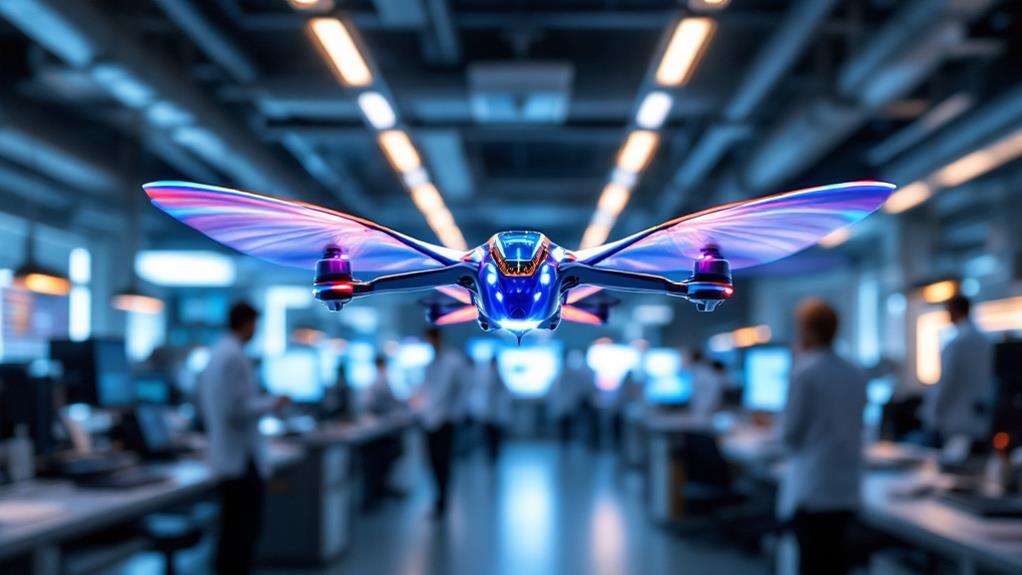
As engineers harness lessons from nature, the technological applications of hummingbird drones become increasingly diverse and impactful. You'll find that these drones, like the AeroVironment Nano Hummingbird, are revolutionizing surveillance and reconnaissance. Their design mimics the flight of real hummingbirds, offering unparalleled maneuverability. Imagine controlling one with a remote control to navigate complex environments seamlessly. Thanks to their lightweight carbon fiber structure, weighing just 0.019 kg, they can perform intricate flight patterns, including vertical climbing and multidirectional movement.
These agile devices aren't just limited to surveillance. Their advanced machine learning algorithms allow them to navigate confined spaces without visual feedback, making them ideal for search-and-rescue missions. Picture sending a drone into a collapsed building to locate survivors safely. Their silent flight and compact size also make them perfect for covert operations, gathering intelligence without detection.
Moreover, hummingbird drones open doors for biological studies, letting researchers observe wildlife without disturbing natural behavior. Supported by research from institutions like Purdue University, the integration of sensing technologies and flight control algorithms enhances their capabilities. These drones can detect obstacles effortlessly, proving that remote control isn't just about flying—it's about exploring new frontiers efficiently and effectively.
AeroVironment's Contributions
AeroVironment has redefined the landscape of unmanned aerial vehicles with its groundbreaking Nano Hummingbird. This innovative drone, launched in 2008, weighs a mere 0.019 kg and mirrors the flight mechanics of real hummingbirds, thanks to advanced biomimicry. Its ability to hover, perform aerial flips, and execute vertical flight showcases unparalleled agility and control. Equipped with a camera, the Nano Hummingbird serves as a powerful tool for reconnaissance, making it highly valuable for surveillance and military operations.
The inspiration from nature's own marvels doesn't just stop at the design. AeroVironment's commitment to pushing the boundaries of small UAVs has opened doors to numerous applications beyond military use. From environmental monitoring to biological studies, the potential fields of application for the Nano Hummingbird are vast. The drone's sophisticated maneuverability and compact size make it ideal for situations requiring discreet observation and precise data collection.
If you're interested in exploring the operational capabilities of the Nano Hummingbird, or if you need further information regarding its applications, please contact the Department of Defense. AeroVironment's contributions to UAV technology continue to pave the way for future innovations and applications in diverse fields.
Challenges and Limitations
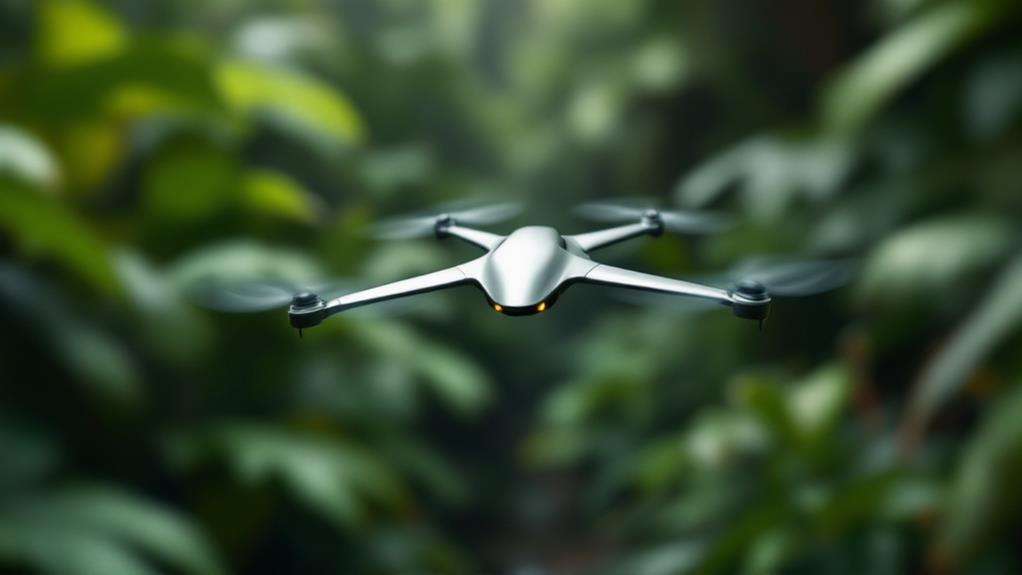
Despite the remarkable advances in UAV technology, hummingbird drones face several notable challenges and limitations. One of the main issues is energy efficiency. The small size of these drones limits battery capacity, restricting flight duration to only a few minutes per charge. Additionally, mimicking the intricate flight mechanics of real hummingbirds presents challenges with stability and control. Navigating through dynamic environments often disrupts flight patterns due to unsteady aerodynamics.
Another significant challenge is environmental perception. These drones need to detect and navigate around obstacles efficiently without solely relying on visual feedback. This requires advanced sensing technologies, which can be difficult to integrate due to size constraints.
| Challenge | Impact |
|---|---|
| Energy Efficiency | Limited flight duration |
| Flight Mechanics | Stability and control issues |
| Environmental Perception | Requires advanced sensing tech |
| Functionality Integration | Adds weight and power demands |
| Development Costs | Hinders widespread deployment |
Integrating additional functionalities like cameras and GPS increases weight and power demands, complicating design and performance optimization. Moreover, high development costs and existing technological limitations can slow down widespread deployment and research. Overcoming these hurdles demands continuous investment and collaboration across various fields to push boundaries and innovate effectively.
Future Prospects in UAVs
Looking ahead, the future of UAVs, particularly hummingbird drones, promises exciting advancements driven by innovative technology. You'll see significant progress in flight maneuverability and stability thanks to advanced algorithms and machine learning techniques. These innovations enhance autonomous navigation, allowing the drones to better navigate diverse environments. As they become more adept at understanding their surroundings, the potential uses expand dramatically.
Battery-powered versions of these drones are under development, aiming for greater autonomy. With integrated features like cameras and GPS, you'll find these UAVs playing crucial roles in various fields, from search-and-rescue missions to covert operations. Their silent flight makes them ideal for discreet surveillance and reconnaissance tasks, providing a tactical advantage in complex scenarios.
The convergence of biology and robotics is another fascinating aspect driving future prospects. By studying natural hummingbird behaviors, researchers are gaining valuable insights to inform UAV design. This cross-disciplinary approach is set to revolutionize the engineering of hummingbird drones, making them more efficient and adaptable.
Moreover, open-source simulations and dynamic frameworks are being crafted to optimize the design and control of Flapping Wing Micro Air Vehicles. These tools will undoubtedly enhance the performance and capabilities of future UAV technologies, paving the way for groundbreaking applications.

